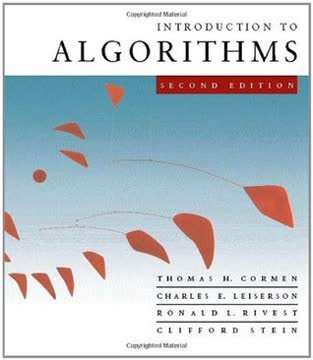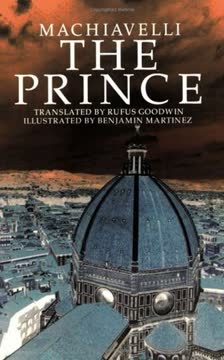Key Takeaways
1. Know yourself and your enemy for victory
"If you know the enemy and know yourself, you need not fear the result of a hundred battles."
Self-awareness is paramount. Understanding your own strengths, weaknesses, and capabilities is the foundation of effective strategy. This knowledge allows you to make informed decisions and avoid overextending yourself. Equally important is knowing your enemy - their tactics, motivations, and resources. By gathering intelligence and analyzing your opponent, you can anticipate their moves and develop counter-strategies.
Practical application:
- Conduct regular self-assessments of your forces
- Invest in intelligence gathering on enemy capabilities
- Identify and exploit gaps in enemy knowledge about you
- Continuously update and refine your understanding of both sides
2. Adapt strategies to changing circumstances
"Just as water retains no constant shape, so in warfare there are no constant conditions."
Flexibility is key. The battlefield is dynamic, and rigid adherence to pre-set plans can lead to disaster. Successful commanders must be able to quickly assess new situations and adjust their strategies accordingly. This adaptability allows you to seize unexpected opportunities and mitigate unforeseen challenges.
Adaptability in action:
- Develop multiple contingency plans
- Train troops to be versatile and multi-skilled
- Encourage initiative and decision-making at all levels
- Regularly conduct war games to practice adapting to various scenarios
3. Deceive and misdirect to gain advantage
"All warfare is based on deception."
Psychological warfare matters. By misleading your enemy about your intentions, strength, or position, you can create opportunities for decisive action. Deception can take many forms, from false information to feigned retreats or advances. The goal is to manipulate the enemy's perception and decision-making process to your advantage.
Deception tactics:
- Spread disinformation through multiple channels
- Use camouflage and concealment to hide troop movements
- Stage diversionary attacks to draw attention from main objectives
- Employ double agents and false defectors
4. Exploit enemy weaknesses and avoid strengths
"Attack him where he is unprepared, appear where you are not expected."
Strategic targeting is crucial. Instead of engaging the enemy head-on where they are strongest, seek out vulnerabilities in their defenses or strategy. By focusing your efforts on these weak points, you can achieve victory with minimal losses. Simultaneously, protect your own weaknesses and avoid exposing them to enemy attack.
Practical application:
- Conduct thorough reconnaissance to identify enemy vulnerabilities
- Develop specialized units for exploiting specific weaknesses
- Use rapid, targeted strikes to disrupt enemy plans
- Fortify and conceal your own weak points
5. Use terrain and environment to your benefit
"The natural formation of the country is the soldier's best ally."
Geography shapes strategy. Understanding and utilizing the terrain and environmental conditions can provide significant tactical advantages. This includes using natural features for cover, exploiting weather conditions, and manipulating the battlefield to your advantage. By mastering the environment, you can force the enemy to fight on your terms.
Environmental tactics:
- Train troops in various terrains and climates
- Develop specialized equipment for different environments
- Use natural obstacles to channel enemy movements
- Time operations to coincide with favorable weather conditions
6. Leadership is crucial for military success
"The general who advances without coveting fame and retreats without fearing disgrace, whose only thought is to protect his country and do good service for his sovereign, is the jewel of the kingdom."
Effective leadership inspires. A skilled commander must lead by example, demonstrating courage, wisdom, and integrity. They must balance the needs of their troops with the demands of the mission, making difficult decisions under pressure. Good leadership fosters loyalty, discipline, and motivation throughout the ranks.
Leadership principles:
- Lead from the front, sharing hardships with troops
- Communicate clearly and decisively
- Reward merit and address misconduct fairly
- Prioritize the welfare and morale of your forces
7. Maintain discipline and unity in your forces
"Regard your soldiers as your children, and they will follow you into the deepest valleys; look upon them as your own beloved sons, and they will stand by you even unto death."
Cohesion amplifies strength. A disciplined and unified force is far more effective than a larger but disorganized one. Fostering a sense of camaraderie and shared purpose among your troops enhances their fighting spirit and overall effectiveness. Discipline ensures that orders are followed precisely, even in chaotic battlefield conditions.
Building unity:
- Implement rigorous training regimens
- Establish clear codes of conduct and enforce them consistently
- Promote team-building activities and shared experiences
- Recognize and celebrate unit achievements
8. Intelligence gathering is essential for victory
"Secret operations are essential in war; upon them the army relies to make its every move."
Information is power. Accurate and timely intelligence can be the difference between victory and defeat. This includes not only information about the enemy but also about terrain, weather conditions, and political factors. A well-informed commander can make better decisions and anticipate enemy actions.
Intelligence strategies:
- Develop a network of reliable informants
- Utilize advanced surveillance and reconnaissance technologies
- Train specialized units in intelligence gathering and analysis
- Implement secure communication systems to protect sensitive information
9. Timing and momentum are key in warfare
"The quality of decision is like the well-timed swoop of a falcon which enables it to strike and destroy its victim."
Seize the initiative. Knowing when to act is just as important as knowing how to act. Striking at the right moment can multiply the effectiveness of your forces and catch the enemy off-guard. Once momentum is gained, it should be maintained to prevent the enemy from regrouping or countering.
Timing tactics:
- Develop rapid response capabilities
- Train commanders in recognizing and exploiting opportunities
- Use diversionary tactics to create openings for decisive action
- Implement logistics systems that can support sustained operations
10. Conserve resources and avoid prolonged conflicts
"There is no instance of a country having benefited from prolonged warfare."
Efficiency is crucial. Extended conflicts drain resources, morale, and public support. The goal should be to achieve objectives quickly and decisively, minimizing the cost in lives and material. This requires careful planning, efficient use of resources, and a clear exit strategy.
Resource management:
- Prioritize high-value targets that can quickly end conflicts
- Develop precision weapons and tactics to minimize collateral damage
- Implement efficient supply chain and logistics systems
- Foster diplomatic solutions alongside military operations to prevent prolonged engagements
Last updated:
FAQ
What's The Complete Art of War about?
- Military Strategy Focus: The Complete Art of War combines the teachings of Sun Tzu and Sun Pin, focusing on military strategy and tactics. It emphasizes understanding warfare as a critical affair of state.
- Broader Applications: The principles extend beyond military applications, influencing business, personal development, and conflict resolution.
- Historical Context: Provides insights into ancient Chinese warfare, detailing political and social dynamics during the Spring and Autumn and Warring States periods.
Why should I read The Complete Art of War?
- Timeless Wisdom: Offers enduring insights on strategy, leadership, and decision-making applicable in modern contexts.
- Comprehensive Insights: Enhances understanding of military tactics, including terrain, deception, and psychological warfare.
- Cultural Significance: Provides insight into Chinese culture and philosophy, enriching perspectives on Eastern thought.
What are the key takeaways of The Complete Art of War?
- Importance of Preparation: Emphasizes thorough preparation and analysis before engaging in conflict.
- Deception as Strategy: Highlights the need to manipulate the enemy’s perceptions for strategic advantage.
- Understanding Terrain: Advises on the strategic implications of different types of terrain.
What are the best quotes from The Complete Art of War and what do they mean?
- “One who knows the enemy...”: Stresses the importance of self-awareness and understanding the opponent for victory.
- “The highest realization of warfare...”: Advocates for undermining the enemy’s strategy rather than direct combat.
- “Warfare is the Tao of deception.”: Encapsulates the necessity of deceit in warfare to create opportunities for victory.
How does The Complete Art of War apply to modern business practices?
- Strategic Planning: Principles of preparation and analysis can be applied to business planning and competitive strategy.
- Deception in Marketing: Businesses can use strategic marketing to create favorable perceptions and mislead competitors.
- Leadership and Team Dynamics: Insights on managing team morale are relevant in modern organizational leadership.
What are the main concepts in The Complete Art of War?
- Five Factors of Warfare: Evaluates military situations through Tao, Heaven, Earth, generals, and laws.
- Types of Terrain: Categorizes terrain into types like accessible and fatal, each requiring different strategies.
- Psychological Warfare: Emphasizes morale and manipulating the enemy’s emotions.
How does The Complete Art of War address the concept of leadership?
- Qualities of a Good Leader: Emphasizes wisdom, credibility, benevolence, courage, and strictness.
- Independence in Command: Advocates for leaders to have autonomy in decision-making.
- Emotional Connection: Suggests treating troops as family to foster loyalty and commitment.
What role does deception play in The Complete Art of War?
- Core Principle: Deception is fundamental, with warfare described as the Tao of deception.
- Manipulating Perceptions: Advises creating false appearances to confuse the enemy.
- Psychological Advantage: Deception affects the enemy’s morale and confidence, inducing fear and hesitation.
How does The Complete Art of War define victory?
- Strategic Advantage: Victory is achieving strategic objectives with minimal conflict.
- Preparation and Timing: Emphasizes understanding when to engage and when to avoid conflict.
- Unity of Purpose: Links victory to troop unity and alignment with the commander’s objectives.
What are the different types of spies mentioned in The Complete Art of War?
- Local Spies: Provide intelligence about the enemy’s movements and plans from the local area.
- Internal Spies: Employed within the enemy’s ranks to understand their strategies and weaknesses.
- Double Agents: Provide misleading information to the enemy while relaying accurate intelligence back.
How does The Complete Art of War suggest handling superior forces?
- Divide and Conquer: Emphasizes dividing the enemy’s forces to weaken their strength.
- Utilize Terrain: Engaging in unfavorable terrain can level the playing field against larger forces.
- Employ Unorthodox Tactics: Encourages flexibility and innovation to disrupt the enemy’s plans.
What is the significance of morale in The Complete Art of War?
- Critical for Success: Morale is a decisive factor in military success.
- Psychological Warfare: Discusses tactics for undermining the enemy’s morale, such as creating confusion.
- Leadership Influence: Highlights the importance of virtue and benevolence in leadership to maintain high morale.
Review Summary
The Art of War is a classic Chinese military treatise highly regarded for its timeless strategic insights. Readers praise its applicability to various fields beyond warfare, including business and personal relationships. Many find the principles on leadership, adaptability, and intelligence gathering valuable. However, some criticize its vagueness, potential for misinterpretation, and outdated concepts. The book's concise style and emphasis on winning without direct conflict are appreciated, though some find it boring or difficult to read.
Similar Books










Download PDF
Download EPUB
.epub digital book format is ideal for reading ebooks on phones, tablets, and e-readers.






